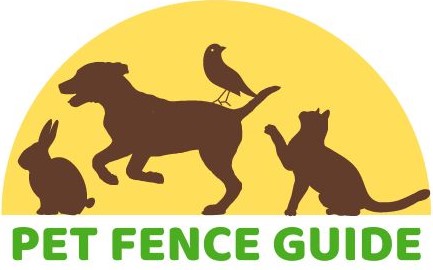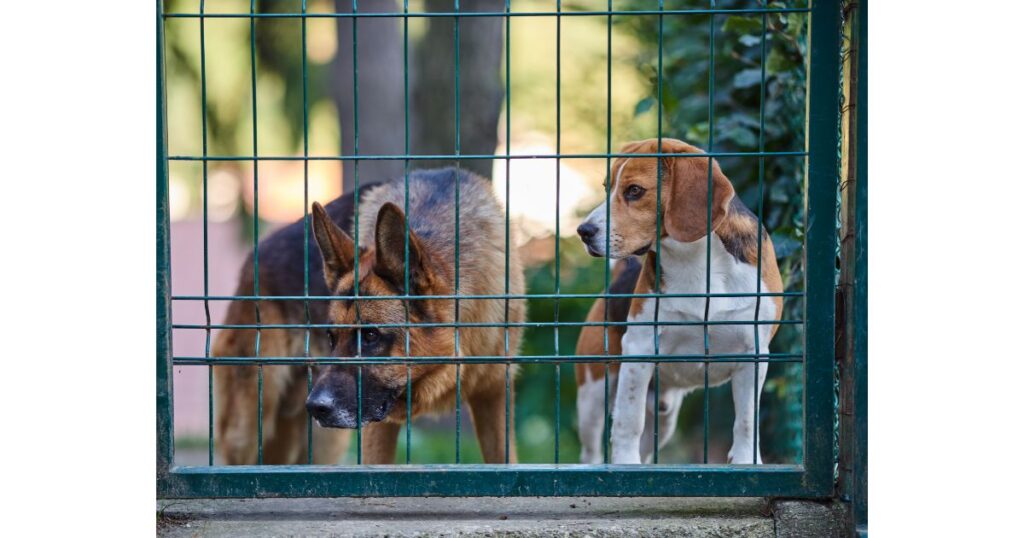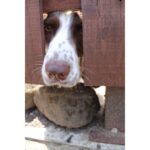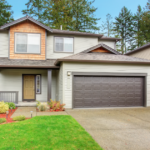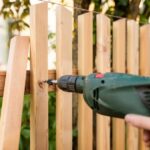How To Make Fence Taller For Dog. If you’re a dog owner, you know how important it is to keep your furry friend safe and secure in your yard. One common concern is ensuring that your fence is tall enough to prevent your dog from jumping over and wandering off. In this guide, we’ll explore various methods and strategies to make your fence taller and more effective. It will help your dog while maintaining their safety and happiness.
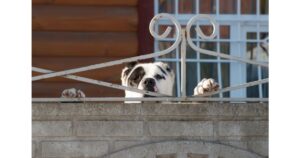
Introduction
Table of Contents
ToggleHaving a dog that loves to explore is wonderful, but it can also be a challenge, especially when it comes to fence height. Dogs are naturally curious and can find ways to escape if they feel confined. In this article, we’ll walk you through step-by-step solutions to increase your fence’s height and improve your dog’s containment.
Investing in a taller fence for your dogs goes beyond just physical containment—it offers a multitude of benefits that contribute to their safety, well-being, and peace of mind. Here are some compelling reasons why opting for a taller fence is a wise choice for dog owners:
Enhanced Containment: The most obvious benefit is increased containment. Taller fences serve as a formidable obstacle, deterring even the most agile and determined of dogs from attempting to jump or climb over.
Prevent Escape: Dogs are naturally curious and may be tempted to explore the world beyond your yard. A taller fence acts as a strong deterrent against escape, minimizing the risk of your dog wandering into dangerous areas.
Reduced Stress: Dogs that frequently attempt to escape can experience heightened stress and anxiety. A taller fence provides a sense of security and confinement, helping to alleviate stress and promote a calmer disposition.
Increased Freedom: With a taller fence, you can allow your dog more freedom to roam and play outdoors without constant supervision. This translates to more exercise and mental stimulation, which are essential for a dog’s overall well-being.
Neighborhood Harmony: A dog that frequently escapes can create tension with neighbors and other pets. By containing your dog within your yard, you foster a harmonious neighborhood environment and prevent potential conflicts.
Protection from External Threats: A taller fence serves as a barrier against external threats such as wildlife, aggressive dogs, and unfamiliar humans. This layer of security ensures that your dog remains safe within their territory.
Enhanced Training: Training your dog to respect the boundaries of a taller fence can be a practical part of their obedience training. This helps reinforce good behavior and strengthens your bond with your pet.
Privacy: Taller fences provide increased privacy for both you and your dog. This privacy creates a more comfortable and secure space for your dog to enjoy outdoor activities without feeling exposed.
Customization: Taller fences can be customized to suit your yard’s aesthetics. You can choose materials, colors, and designs that complement your property while ensuring your dog’s safety.
Peace of Mind: Ultimately, a taller fence grants you peace of mind, knowing that your dog is safe, contained, and protected. This sense of security allows you to relax and enjoy quality time with your furry companion.
Assess Your Current Fence
When it comes to keeping your furry friend safe and secure, the first line of defense is often your fence. A well-maintained fence serves as a barrier that prevents your dog from wandering off into potentially dangerous situations. However, not all fences are created equal, and it’s essential to assess your current fence to ensure it meets the needs of your dog.
Why Assess Your Fence?
Assessing your fence might sound like a simple task, but it holds significant importance in ensuring your dog’s safety. Dogs have different abilities when it comes to jumping and climbing, and what might be an insurmountable obstacle for one breed could be a mere inconvenience for another. By evaluating your fence’s current height and condition, you can identify potential weak points and areas that might need improvement.
Measure the Height
Start by measuring the height of your fence. The height is a critical factor in preventing your dog from jumping over it. Stand on level ground and measure from the ground to the top of the fence. This measurement will give you a clear idea of your fence’s current height and whether it’s sufficient to contain your dog.
Consider Your Dog’s Abilities
Different dog breeds have varying levels of agility and athleticism. Larger and more athletic breeds might be capable of clearing taller fences with ease, while smaller breeds may not possess the same jumping capabilities. Research your dog’s breed tendencies to understand their potential for fence jumping.
Check for Weak Points
Walk along the perimeter of your fence and inspect for any weak points or damage. Look for loose boards, gaps, or areas where your dog could potentially squeeze through. If your dog is a digger, check for any areas where they might be attempting to dig under the fence.
Assess Visibility
Assess the visibility of your fence from both inside and outside your yard. Sometimes, dogs attempt to jump fences because they see something enticing on the other side. By adding visual barriers, such as tall plants or screens, you can reduce their temptation to jump.
Consider Your Dog’s Behavior
Understanding your dog’s behavior is crucial. Do they show signs of restlessness or anxiousness when they’re outside? Do they frequently attempt to jump or climb the fence? Observing their behavior can give you insights into whether your current fence is effective in containing them.
Plan for the Future
As you assess your current fence, also consider your dog’s growth and development. Puppies grow quickly, and what might be a sufficient height for them now could become inadequate in a matter of months. If you have a young dog, it might be wise to plan for a fence that will accommodate their adult size.
How To Make Fence Taller For Dog. Choosing the Right Materials
Selecting the appropriate materials for your fence extension is crucial. Opt for materials that are durable, weather-resistant, and match your current fence’s aesthetics. Common choices include wood, vinyl, and lattice panels. Some key considerations should be.
Durability: Opt for materials that can withstand the elements and your dog’s natural tendencies. Wood, vinyl, and metal are popular choices due to their durability and resistance to wear and tear.
Height and Visibility: Choose materials that can effectively increase the height of your fence while maintaining visibility. Lattice panels, for instance, can provide additional height without completely obstructing the view.
Safety: Prioritize your dog’s safety by avoiding materials that could be harmful if chewed or ingested. Sharp edges and toxic substances should be avoided at all costs.
Aesthetics: Consider materials that match your existing fence’s aesthetics to maintain a cohesive look. This ensures that the fence extension doesn’t stand out as an eyesore.
Maintenance: Opt for materials that are easy to clean and require minimal maintenance. Regular cleaning and upkeep will prolong the life of the fence extension.
Budget: While quality is essential, it’s also important to choose materials that fit within your budget. Balance durability and cost-effectiveness to make the best decision for your dog and your wallet.

D. DIY Fence Extension
If you’re a hands-on pet owner looking to extend your dog’s fence, a DIY approach can be both fulfilling and cost-effective. With the right tools and materials, you can create a secure and appealing fence extension tailored to your dog’s needs.
Materials: Begin by gathering the necessary materials such as wood, screws, brackets, and any chosen barriers like lattice panels. Ensure that the materials are dog-friendly and durable.
Measurements: Accurate measurements are crucial to a successful DIY fence extension. Measure the existing fence’s height and plan how much additional height you want to add to prevent your dog from jumping over.
Secure Installation: Attach the chosen material (e.g., wooden panels) securely to the top of your existing fence. Use brackets and screws to ensure stability and prevent wobbling.
Smooth Finish: Sand down any rough edges or surfaces to prevent splinters and injuries to your dog. A smooth finish also adds to the overall aesthetics of the extension.
Regular Maintenance: While a DIY extension is a cost-effective solution, it requires regular maintenance. Inspect the extension periodically for loose screws, splintering wood, or signs of wear.
Safety First: Ensure that the extension is free from any potential hazards such as exposed nails or sharp edges that could harm your dog.
Personal Touch: The DIY approach allows you to add a personal touch to the extension. Consider painting or staining the wood to match your yard’s aesthetics.
E. Hiring a Professional
If DIY isn’t your forte, hiring a professional fence contractor is a great option. They have the expertise to ensure a secure and aesthetically pleasing fence extension that suits your dog’s needs.
When it comes to ensuring your dog’s safety within your yard, enlisting the expertise of a professional fence contractor can provide invaluable peace of mind. Hiring a professional ensures that your dog’s containment needs are met with precision and efficiency, leaving no room for uncertainties.
Expertise and Experience: Professional fence contractors possess years of experience in designing and installing fences. They understand the nuances of different dog breeds, behaviors, and yard layouts, allowing them to create a tailored solution that effectively prevents escape attempts.
Customized Solutions: Every dog is unique, and their containment requirements can vary. A professional will assess your dog’s behavior, size, and tendencies to recommend and implement a fence extension that addresses your specific needs.
Quality Materials: Professionals have access to high-quality materials that are built to withstand the elements and the wear and tear of active pets. This ensures that the fence extension not only serves its purpose but also has longevity.
Precise Installation: A professionally installed fence extension guarantees accurate measurements, secure attachment, and proper alignment. This reduces the risk of weak points or gaps that your dog could exploit.
Compliance with Regulations: Depending on your location, there might be local regulations regarding fence height and materials. A professional is well-versed in these regulations and can ensure that your fence extension is compliant.
Time and Convenience: Hiring a professional saves you the time and effort required for a DIY project. They handle everything from planning and design to installation, leaving you with more time to focus on your dog’s well-being.
Guaranteed Results: Reputable professionals often offer warranties on their work, giving you peace of mind that if any issues arise, they will be promptly addressed.
Aesthetic Appeal: A professionally designed fence extension takes into account not only functionality but also aesthetics. The extension seamlessly integrates with your existing fence, enhancing the overall look of your yard.
Safety First: Professionals prioritize safety, ensuring that there are no hazardous elements in the design or installation. This prevents potential harm to your dog and other family members.
F. Adding Visual Barriers
Dogs often jump fences because they’re curious about something on the other side. By adding visual barriers like plants or screens, you can reduce their temptation to jump.
G.Training Your Dog
Training plays a vital role in keeping your dog from attempting to jump the fence. Teach them commands like “stay” and “no jump” to reinforce good behavior. While extending your fence is a physical solution, training your dog is a crucial behavioral aspect of ensuring it stay safely within your yard. Training not only prevents escape attempts but also strengthens your bond with your furry companion.
Commands: Teach your dog basic commands like “stay,” “come,” and “no jump.” Consistent use of these commands reinforces their understanding of boundaries.
Positive Reinforcement: Reward your dog with treats, praise, or playtime when they exhibit desired behavior. Positive reinforcement encourages them to stay within the confines of the yard.
Boundary Training: Use a leash to guide your dog around the yard’s perimeter. When they approach the fence, gently guide them back and reward them for staying within the designated area.
Visual Cues: Place visual markers along the fence line, such as flags or brightly colored objects, to help your dog visually understand the boundaries.
Supervision: Initially, supervise your dog’s outdoor activities to catch any attempts to jump or escape. Correct their behavior immediately and redirect their attention to positive activities.
Consistency: Consistency is vital in training. Set a routine for outdoor playtime and reinforce training commands consistently.
Socialization: Socialize your dog with other dogs and people. A well-socialized dog is less likely to be anxious or attempt to escape out of fear.
Distractions: Provide plenty of toys and engaging activities within the yard to keep your dog entertained and less likely to explore the fence.
Avoid Punishment: Avoid punishment-based training, as it can lead to fear and anxiety. Instead, focus on positive reinforcement to create a positive association with staying within the yard.
Patience: Training takes time. Be patient and understanding as your dog learns the boundaries. Celebrate their progress and be prepared for setbacks.
H. Regular Maintenance
A taller fence still needs regular maintenance. Check for any wear and tear, loose parts, or areas that might need reinforcement. Keeping your fence in good condition ensures its effectiveness.
Conclusion
By following these strategies, you can create a safer and more secure environment for your dog. Remember that every dog is unique, so choose the methods that best suit your dog’s behavior and needs.
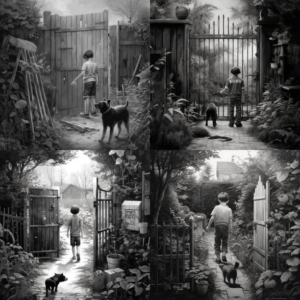
FAQs And Answers
Can dogs jump a 6-foot fence?
Additionally, a dog’s motivation to jump the fence can also play a role. If a dog sees something enticing on the other side, like another dog, a squirrel, or a person, it might be more motivated to make the effort to jump.
How to build a cheap fence for a dog?
1. Set a Budget: Determine the amount you’re willing to invest in the fence. This helps you make informed decisions while shopping for materials.
2. Opt for Basic Materials: Choose economical yet sturdy materials like chain-link, welded wire, or wooden pallets. These options are readily available and won’t break the bank.
3. Measure Accurately: Measure your yard’s perimeter precisely. Accurate measurements prevent wastage and ensure you purchase the right amount of materials.
4. Research Regulations: Check local regulations regarding fence height and placement. Adhering to these guidelines avoids costly modifications later.
5. DIY Approach: Consider building the fence yourself. DIY projects save on labor costs and allow you to customize the design to your needs.
6. Simple Design: Choose a straightforward fence design. A basic picket or chain-link fence is often more affordable than intricate designs.
7. Repurpose Materials: Repurpose materials like discarded wood, pallets, or salvaged metal for a unique and budget-friendly fence.
8. Mix and Match: Combine materials creatively. For example, use chain-link for most of the fence and wooden panels for privacy areas.
9. Visual Barriers: Utilize tall shrubs, bushes, or outdoor screens to create visual barriers. These reduce the temptation for your dog to jump or escape.
10. Affordable Posts: Look for affordable post options, such as metal T-posts or treated wooden posts. Properly spaced posts ensure stability without overspending.
11. DIY Gates: Construct simple gates using the same materials as the fence. DIY gates are cost-effective and can be customized to fit any opening.
12. Regular Maintenance: Perform regular maintenance to extend the fence’s lifespan. Fixing small issues promptly prevents bigger, more expensive problems.
13. Safety Considerations: Prioritize safety. Avoid using toxic materials and ensure the fence is tall enough to prevent your dog from escaping.
14. Shop Smart: Compare prices from different suppliers and look for sales or discounts on materials. Online marketplaces and local hardware stores can be valuable resources.
15. Community Collaboration: If neighbors are also considering fencing, you might pool resources for bulk discounts on materials.
What is the most economical fence for dogs?
- Chain-Link Fencing: Chain-link fences are a cost-effective choice. They provide visibility, which can reduce your dog’s desire to jump or escape. Chain-link fencing comes in various heights and can be customized to fit your yard’s dimensions.
- Welded Wire Fencing: Welded wire fencing is another affordable option. It’s available in different gauges and can be easily cut to the desired size. While it may not offer as much visibility as chain-link, it provides a secure containment solution.
- Wooden Pallet Fences: Wooden pallet fences are a creative and economical choice. If you can find discarded pallets, they can be repurposed to create a rustic and functional fence. Keep in mind that you might need to reinforce pallets for added strength.
- Split Rail Fencing: Split rail fences are simple and cost-effective. They provide a boundary without obstructing the view. While they might not be the best choice for containing small dogs, they can work well for larger breeds.
- Mesh or Netting Fences: Mesh or netting fences are lightweight and inexpensive. They’re particularly suitable for temporary or small dog enclosures. However, they might not be as durable for larger, more energetic dogs.
